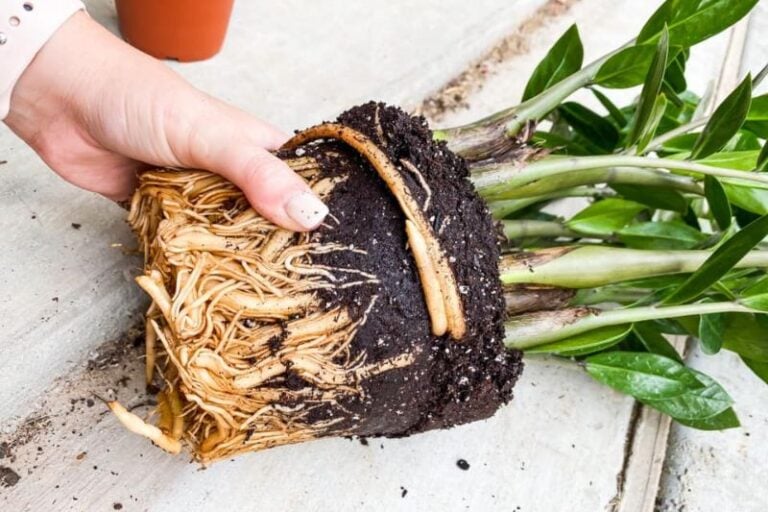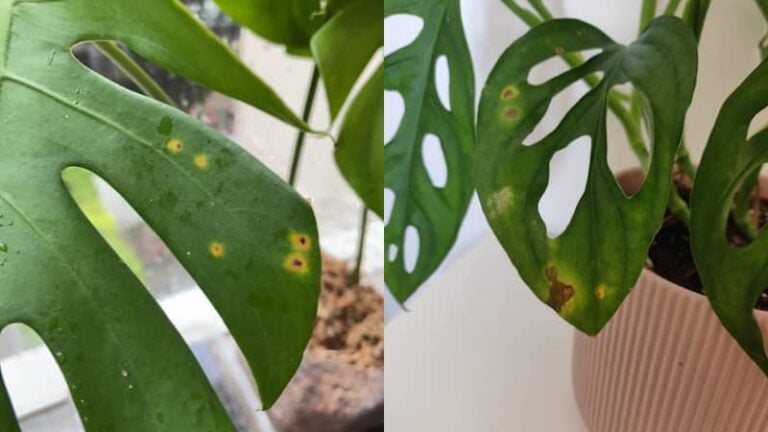So, you’ve brought home a coffee plant, excited to care for it and watch it thrive. But now, you’re noticing something troubling—your coffee plant is dropping leaves!
Whether it’s yellowing, brown spots, or leaves simply falling off, don’t panic. I’m here to help you figure out what’s going wrong and how to bring your plant back to health.
The most common reason for a coffee plant dropping leaves is overwatering. Other factors, like sudden temperature changes, drafts, low humidity, or too much sunlight, can also stress your plant.
Coffee plants thrive in tropical environments with consistent moisture and indirect light. If something’s off in its care routine, your coffee plant may start showing signs like yellow or brown leaves before dropping them altogether.
Let’s dive into why this might be happening and how to fix it.
Common Causes of Coffee Plant Dropping Leaves (and How to Fix Them)
Caring for a coffee plant can be tricky because it’s sensitive to environmental changes and improper care.
The key is to identify the issue early, before the damage becomes permanent. Below, I’ll walk you through the most common problems, symptoms, and solutions.
Underwatering
If your coffee plant’s leaves are turning brown or falling off, dry soil could be the culprit. Coffee plants love humidity and consistent moisture. Letting the soil dry out completely can stress the plant, causing leaf loss.
Solutions
- Water more frequently to keep the soil moist but not soggy.
- If the soil feels too dry, soak the pot in water for 30–60 minutes to rehydrate it.
- Allow excess water to drain, then water again only when the top inch (about 1 inch / 2.54 cm) of soil feels dry.
Overwatering
Overwatering is another top reason why coffee plants drop leaves. Sitting in waterlogged soil can lead to root rot, which causes leaves to turn yellow and fall off.
Solutions
- Always let the top inch (1 inch / 2.54 cm) of soil dry out before watering again.
- Remove any standing water from the saucer 30 minutes after watering.
- Test the soil by pressing your finger into it—if it’s dry an inch down, it’s time to water.
Low Humidity
Coffee plants are native to humid, tropical environments. If the air around your plant is too dry, it might drop leaves to conserve energy.
Solutions
- Mist your coffee plant daily (but avoid misting at night).
- Use a humidifier near the plant or place it on a pebble tray filled with water (make sure the pot isn’t sitting directly in the water).
- Group your coffee plant with other houseplants to increase overall humidity.
Compact Soil
Compacted soil can restrict root growth, making it hard for your coffee plant to absorb water and nutrients. This stress can lead to leaf drop.
Solutions
- Loosen compacted soil gently with a gardening fork, being careful not to damage the roots.
- If the soil is too compact, repot your plant with fresh, well-draining potting mix.
Temperature Stress
Coffee plants don’t like temperature extremes. If the temperature drops below 55°F (12°C) or rises above 75°F (16°C), your plant might react by shedding leaves.
Solutions
- Keep your plant in a spot where the temperature stays between 60°F ( 16°C) and 75°F (24°C).
- If you keep it outdoors, bring it inside during cold weather or extreme heat.
Drafts
Cold or hot drafts can stress your coffee plant, causing it to drop leaves
Solutions
- Keep your coffee plant away from drafty windows, doors, or air vents.
- If your plant is outside, shield it from strong winds.
Too Much Direct Sunlight
Direct sunlight can scorch the leaves, causing brown spots and leaf drop. Coffee plants prefer bright, indirect light.
Solutions
- Move your coffee plant to a spot with bright, indirect sunlight.
- Avoid placing it in direct sunlight for extended periods.
8. Not Enough Light
On the flip side, too little light can also cause problems. Without enough light, your coffee plant may struggle to photosynthesize, leading to yellow or discolored leaves and eventual leaf drop.
Solutions:
- Place your coffee plant in a room with strong, indirect light.
- Use grow lights to supplement natural light if needed.
9. Nutrient Deficiencies
Yellowing leaves on a coffee plant often indicate a lack of nutrients, like iron or manganese. Over-fertilizing, however, can burn the roots and cause leaf drop.
Solutions:
- Use a balanced fertilizer formulated for houseplants. Follow the package instructions for proper dosage.
- If you’ve over-fertilized, repot your plant with fresh soil to dilute the excess fertilizer.
10. Pests
Pests like spider mites and scale insects can wreak havoc on your coffee plant, especially if it’s already stressed. Spider mites thrive in low humidity, while scale insects often appear when the plant is weakened.
Solutions:
- For spider mites, increase humidity and thoroughly water the plant. Prune infested leaves and rinse the remaining foliage.
- For scale insects, treat the plant with a mixture of water, soap, and rubbing alcohol. Apply it to the leaves daily until the pests are gone.
FAQs About Coffee Plants
Q: How often should I water my coffee plant?
A: Water when the top inch (1 inch / 2.54 cm) of soil feels dry. Coffee plants like moist, but not waterlogged, soil. Use the finger test to check moisture levels.
Q: Why are my coffee plant’s leaves turning yellow?
A: Yellow leaves can be caused by pests (like spider mites), nutrient deficiencies, or fungal infections. Identify the underlying issue and take corrective action.
Q: Why are my coffee plant’s leaves curling?
A: Curling leaves may result from overwatering, low light, or nutrient-poor soil. Address the root cause to restore your plant’s health.







